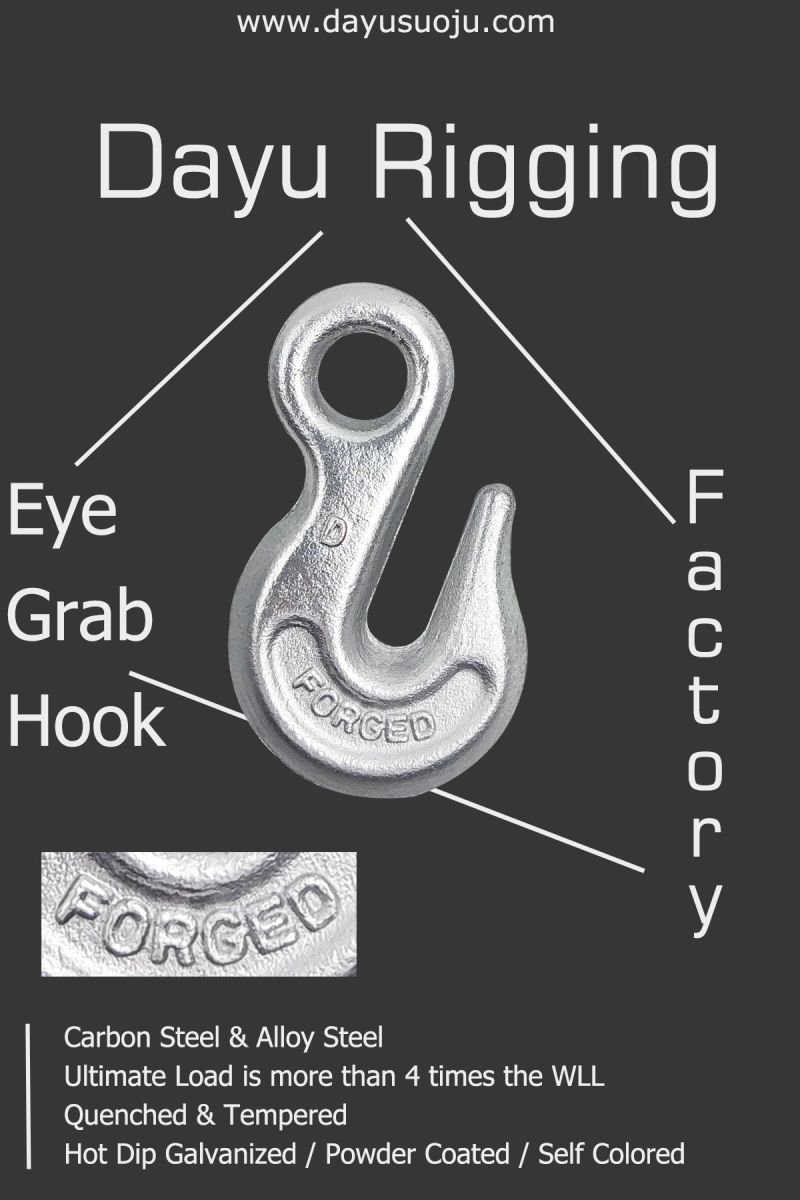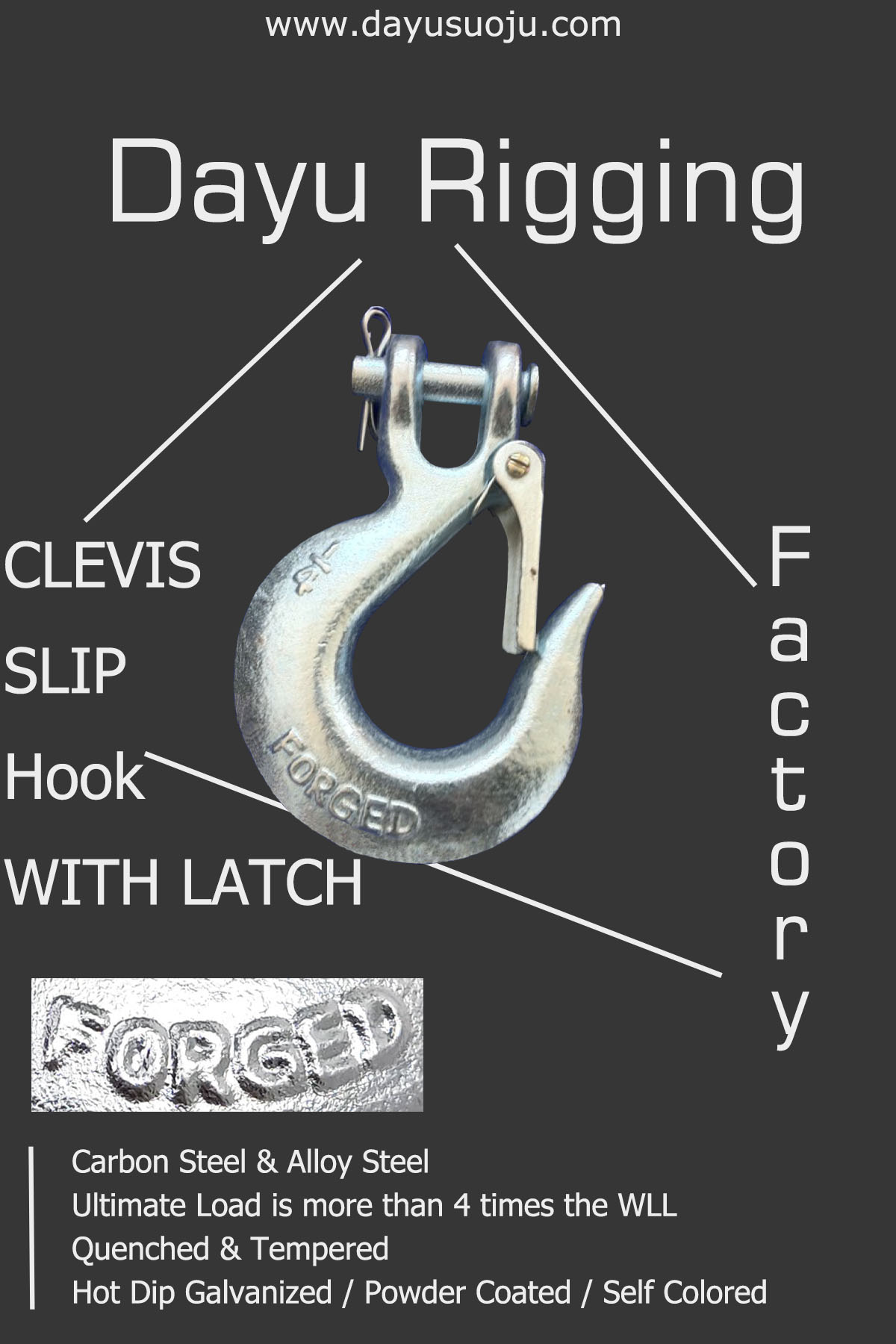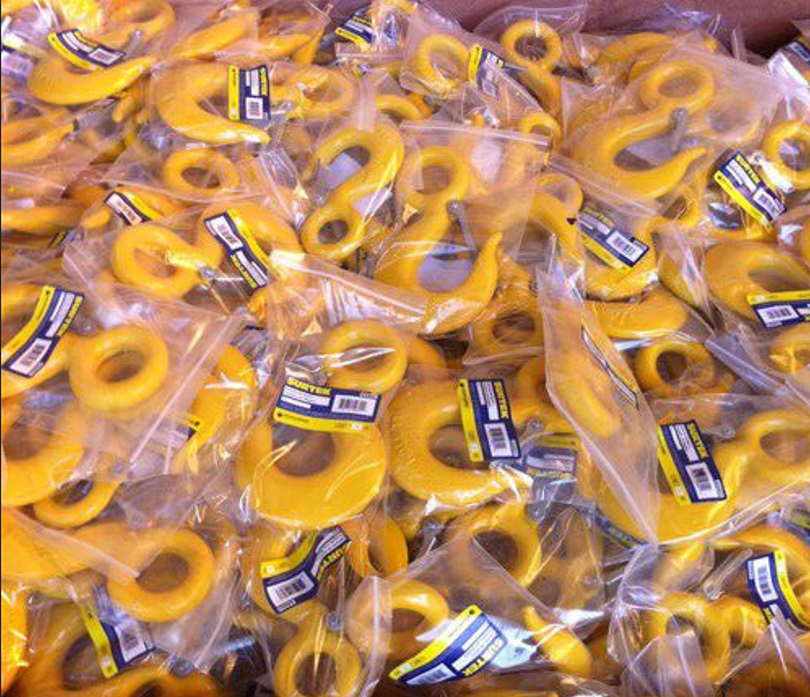DAYU HOOKS
 Nov 21,2022
Nov 21,2022 Browse: 10733
Browse: 10733 Lifting hooks are frequently used to hoist and raise heavy objects. They are secured to the end of a chain or rope that's connected to a crane. When the crane rises, so will the lifting hook as well as the object. While all lifting hooks are used to lift heavy objects, though, they are available in several types. Two of the most common types of lifting hooks are grab hooks and slip hooks.


Here are some points that need to be cared about when using hooks
①The new hook should be subjected to a load test, and it can be used only after passing the test. The opening of the hook mouth measured by it should not exceed 0.25% of the original opening.
③The hook should be checked frequently for cracks, deformation, corrosion, or wear.
④ The hook should be tested once a year. During the test, carry out a static test at 1.25 times the allowable working load for 10 minutes, and then use a magnifying glass or other methods to check for cracks, notches and residual deformation.
⑤ Dangerous sections should be cleaned with kerosene and checked for cracks with a magnifying glass. Plate hooks should be inspected for bushing and pin wear.
⑥ If there is any defect on the hook, no repair welding is allowed.
DAYU supplies eye hooks, clevis hooks, grab hooks, slip hooks, shank hooks, trailer hooks, winch hooks...
Contact us for more details!














